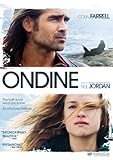 Never Let Me Go, based on Kazuo Ishiguro’s novel of the same name, is set in a modern day dystopia where scientific breakthroughs have extended the human lifespan beyond 100 through copious use of harvested organs. To meet the demand for human organs, clones are produced and raised apart from normal humans in specialized “schools”, such as Hailsham.
Never Let Me Go, based on Kazuo Ishiguro’s novel of the same name, is set in a modern day dystopia where scientific breakthroughs have extended the human lifespan beyond 100 through copious use of harvested organs. To meet the demand for human organs, clones are produced and raised apart from normal humans in specialized “schools”, such as Hailsham.
In order to exploit an entire class of people, you must first strip them of their humanity. This is accomplished at Hailsham not by beatings or threats, but by rumors, peer pressure, and euphemism. The children are taught only the most basic of life skills and drilled in the importance of keeping themselves healthy. They are taught to fear the outside world, and never to form relationships with normal humans or let on that their lives have been anything other than ordinary. A lady identified only as Madame periodically visits the school to collect the children’s best artwork, though she seems loath to touch or talk to them. Social development deliberately stunted, the clones consequently find small displays of individuality intimating, and even as adults struggle with minor decisions like choosing what to order for breakfast at a diner.
The story centers on three of the cloned children; Kathy, creative and unassuming; Tommy, uncoordinated and prone to sudden fits of rage; and Ruth, the “mean girl” of the group. Kathy and Tommy share a quiet understanding, but Ruth, afraid of being alone, interferes in their budding relationship and claims Tommy for herself.
For a brief time they have a new teacher who tells them the truth, that they will not have normal lives or lifespan, but that they are expected to donate their organs until completion (death). Miss Lucy is quickly fired for this transgression, and Miss Emily the headmistress gives a defiant speech to which the children wildly applaud their treatment, not understanding that they are applauding their own destruction.
When the children turn 18 they are transferred to group homes called “The Cottages” and given enough freedom to choose to either begin their donations or work as carers to support those in the process of “completion”. One older couple asks Ruth and Tommy whether the rumors of a three-year deferral for couples “truly in love” are true, setting off wild speculation that they may be able to extend their lives a bit. Ruth comes to the conclusion that she and Tommy would not be able to prove their love, and confesses to Kathy that she stole Tommy away from her. She gives Kathy the address to see Madame, and with that she’s ready to complete.
What Kathy and Tommy really need is a good civil rights lawyer and media attention, but none of the clones are savvy in ways of the world. Instead they speculate that they need to produce artwork for Madame to judge, to enable her to see into their souls and verify their love for one another. Tommy, already weakened by two donations, feverishly produces drawings of elephants and frogs.
Kathy signs Tommy out on a day pass, and they slip away to visit Madame and find her in the garden. She doesn’t want to talk to them about deferment alone, and brings them inside to consult with Miss Emily, who lives with her and now uses a wheelchair. (Perhaps she is a potential recipient of donated organs and has a vested interest in the perpetuation of the system?)

Miss Emily and Madame tell Kathy and Tommy that they have been judged to have no soul, no right to self-determination, and their bodies are property of the state.
Miss Emily explains to the couple that “Hailsham was the last place to consider the ethics of donation. We used your art to show what you were capable of. To show that donor children are all but human. But we were providing an answer to a question no one was asking. If you ask people to return to darkness, the days of lung cancer, breast cancer, motor neuron disease, they’ll simply say no.”
Conditioned to accept this fate, Kathy and Tommy return to the donation center, stopping briefly for Tommy to rage against the dying of the light. Kathy comforts him as best she can, but Tommy completes immediately upon his next donation. With nothing left to live for, Kathy schedules herself to begin the process of donation as well.

